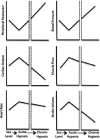Clinical Implications for Exercise at Altitude Among Individuals With Cardiovascular Disease: A Scientific Statement From the American Heart Association
- PMID: 34496612
- PMCID: PMC8649141
- DOI: 10.1161/JAHA.121.023225
Clinical Implications for Exercise at Altitude Among Individuals With Cardiovascular Disease: A Scientific Statement From the American Heart Association
Abstract
An increasing number of individuals travel to mountainous environments for work and pleasure. However, oxygen availability declines at altitude, and hypoxic environments place unique stressors on the cardiovascular system. These stressors may be exacerbated by exercise at altitude, because exercise increases oxygen demand in an environment that is already relatively oxygen deplete compared with sea-level conditions. Furthermore, the prevalence of cardiovascular disease, as well as diseases such as hypertension, heart failure, and lung disease, is high among individuals living in the United States. As such, patients who are at risk of or who have established cardiovascular disease may be at an increased risk of adverse events when sojourning to these mountainous locations. However, these risks may be minimized by appropriate pretravel assessments and planning through shared decision-making between patients and their managing clinicians. This American Heart Association scientific statement provides a concise, yet comprehensive overview of the physiologic responses to exercise in hypoxic locations, as well as important considerations for minimizing the risk of adverse cardiovascular events during mountainous excursions.
Keywords: AHA Scientific Statements; altitude; cardiovascular diseases; exercise; heart failure; hypertension; sudden cardiac death; syncope.
Conflict of interest statement
Writing Group Disclosures
[Table: see text]
Reviewer Disclosures
[Table: see text]
Figures




References
-
- Baggish AL, Wolfel EE, Levine BD. Cardiovascular system. In: Swenson E, Bärtsch P, eds. High Altitude. Springer; 2014:103–139. doi: 10.1007/978-1-4614-8772-2 - DOI
Publication types
MeSH terms
Substances
LinkOut - more resources
Full Text Sources
Medical
Research Materials

